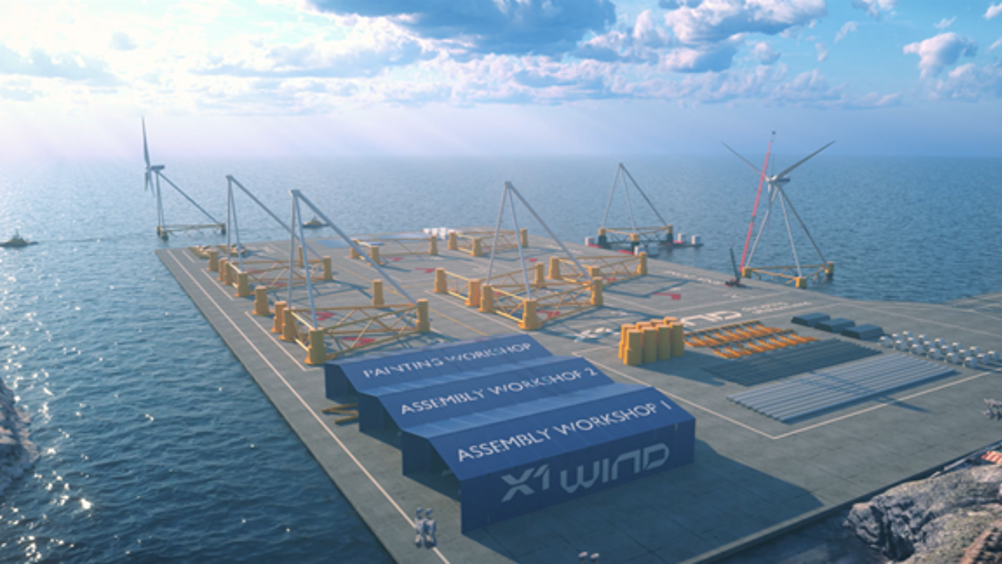€13m awarded to NextFloat+ Project
The NextFloat+ Project has received a €13.4m cornerstone grant from the European Commission’s Innovation Fund to support the industrialisation of floating wind.

The pan-European project aims to accelerate the roll out of the next generation of floating wind technology by boosting competitiveness and scalability.
Led by a consortium formed by project coordinator X1 Wind, alongside Technip Energies and NextFloat Plus S.A.S, the project aims to deploy a 6MW floating wind platform at a test site in the Mediterranean Sea.
The pre-commercial prototype, named ‘X90’, aims to demonstrate a cost-effective integrated system composed of a structurally efficient and lightweight floating platform with a Single Point Mooring (SPM) and a Tension Leg Platform (TLP).
The consortium said this grant will further advance industrialisation and scale-up of the integrated floating wind solution at 20MW+ scale, and comes after the X90 platform was granted a Statement of Feasibility and a Statement of Compliance from registrar and classification specialist DNV.
In a statement, X1 Wind CEO and co-founder, Alex Raventos, said: “The grant represents a cornerstone in the fundraising for the NextFloat+ Project, adding to finance already secured through the European Commission under the Horizon Europe program, finance secured through the French Government as part of the France 2030 plan operated by ADEME, plus private funding from partners and shareholders.
Register now to continue reading
Thanks for visiting The Engineer. You’ve now reached your monthly limit of news stories. Register for free to unlock unlimited access to all of our news coverage, as well as premium content including opinion, in-depth features and special reports.
Benefits of registering
-
In-depth insights and coverage of key emerging trends
-
Unrestricted access to special reports throughout the year
-
Daily technology news delivered straight to your inbox










Water Sector Talent Exodus Could Cripple The Sector
Maybe if things are essential for the running of a country and we want to pay a fair price we should be running these utilities on a not for profit...